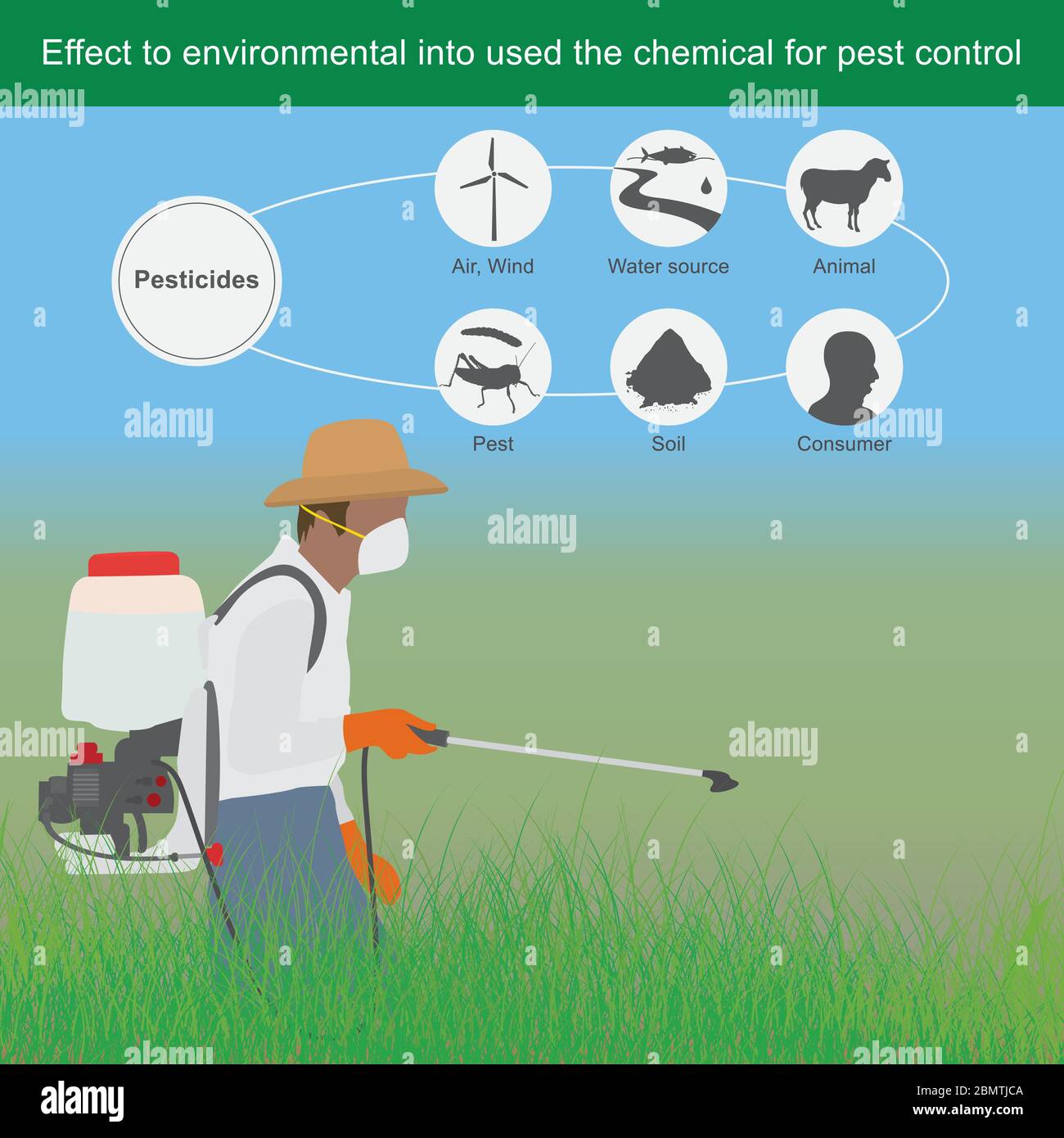Not known Incorrect Statements About Eco Bed Bug Exterminators Dc
Not known Incorrect Statements About Eco Bed Bug Exterminators Dc
Blog Article
Unknown Facts About Eco Bed Bug Exterminators Dc
Table of ContentsThe Facts About Eco Bed Bug Exterminators Dc UncoveredThe Facts About Eco Bed Bug Exterminators Dc RevealedSome Of Eco Bed Bug Exterminators DcEco Bed Bug Exterminators Dc - QuestionsFacts About Eco Bed Bug Exterminators Dc Revealed
Due to the fact that chemicals are harmful, they are also potentially dangerous to human beings, pets, other microorganisms, and the atmosphere. People who use chemicals or frequently come in contact with them need to comprehend the family member toxicity, possible health effects, and preventative measures to lower exposure to the items they utilize. Danger, or risk, of making use of pesticides is the possibility for injury, or the level of risk included in using a pesticide under a provided set of conditions.
However, applicators can lessen or almost eliminate direct exposure-- and therefore decrease risk-- by complying with the label instructions, making use of personal safety apparel and tools (PPE), and managing the pesticide correctly. As an example, even more than 95 percent of all chemical exposures come from facial exposure, mostly to the hands and lower arms. By putting on a set of unlined, chemical-resistant gloves, this kind of direct exposure can be nearly gotten rid of.
The harmful impacts that take place from a solitary direct exposure by any kind of path of access are described "severe results." The four routes of direct exposure are facial (skin), breathing (lungs), dental (mouth), and the eyes. Intense poisoning is figured out by examining the facial poisoning, inhalation toxicity, and oral toxicity of test pets.
Not known Details About Eco Bed Bug Exterminators Dc
Acute toxicity is gauged as the amount or focus of a toxicant-- the a.i.-- needed to kill half of the pets in a test population. This step is generally revealed as the LD50 (lethal dosage 50) or the LC50 (deadly concentration 50). Additionally, the LD50 and LC50 values are based upon a single dosage and are recorded in milligrams of pesticide per kilo of body weight (mg/kg) of the examination pet or partially per million (ppm).
The lower the LD50 or LC50 value of a pesticide product, the higher its toxicity to humans and animals. Pesticides with a high LD50 are the least toxic to humans if made use of according to the instructions on the product label. The chronic poisoning of a pesticide is determined by subjecting test animals to lasting exposure to the active ingredient.
The persistent toxicity of a chemical is harder than intense poisoning to identify through lab evaluation. Products are categorized on the basis of their relative acute poisoning (their LD50 or LC50 worths). Pesticides that are classified as highly harmful (Poisoning Group I) on the basis of visit this website either dental, dermal, or breathing toxicity need to have the signal words risk and toxin printed in red with a skull and crossbones symbol plainly showed on the front panel of the package tag.
The intense (single dosage) dental LD50 for chemical items in this team varies from a trace total up to 50 mg/kg. As an example, direct exposure of a few decreases of a product taken orally could be deadly to a 150-pound person. Some chemical items have just the signal word threat, which informs you nothing concerning the intense toxicity, just that the item can trigger serious eye damages or extreme skin irritation
All About Eco Bed Bug Exterminators Dc
In this group, the severe oral LD50 arrays from 50 to 500 mg/kg. A teaspoon to an ounce of this product can be fatal to a 150-pound individual (bed bug heater rentals). Chemical items categorized as either a little poisonous or relatively safe (Toxicity Classifications III and IV) are called for to have the signal word care on the pesticide label

All pesticide toxicity chemical, including the Consisting of, can be found on discovered product's Material Safety Data Sheet InformationMSDS). Pesticide tags and MSDS can be acquired from retailers or makes - https://ameblo.jp/ecobedbug3xt/entry-12845092216.html. The symptoms of chemical poisoning can vary from a light skin irritation to coma or even fatality.
People likewise differ in their sensitivity to various degrees of these chemicals. Some individuals might reveal no reaction to an exposure that might create severe disease in others (bed bug heat treatment). Since of potential health worries, chemical customers and handlers need to acknowledge the common symptoms and signs of chemical poisoning. The impacts, or symptoms, of chemical poisoning can be extensively defined as either topical or systemic.
What Does Eco Bed Bug Exterminators Dc Mean?
Dermatitis, or inflammation of the skin, is approved as the most commonly reported topical effect related to chemical exposure. Signs of dermatitis range from reddening of the skin to rashes and/or sores. Some individuals have a tendency to cough, wheeze, or sneeze when revealed to chemical sprays. Some people respond to the strong smell and irritating results of oil distillates utilized as providers in chemical products.
This sign typically subsides within a couple of mins after a person is gotten rid of from the exposure to the irritant. A response to a pesticide product that creates somebody not only to sneeze and cough yet additionally to establish serious intense breathing signs and symptoms is a lot more likely to be a real hypersensitivity or allergic response.
Systemic results are rather different from topical results. They typically occur far from the initial point of contact as an outcome of the pesticide being absorbed into and distributed throughout the body. Systemic results commonly include queasiness, throwing up, fatigue, headache, and digestive tract problems. In innovative poisoning cases, the individual may experience adjustments in heart price, trouble breathing, convulsions, and coma, which might lead to death.
Report this page